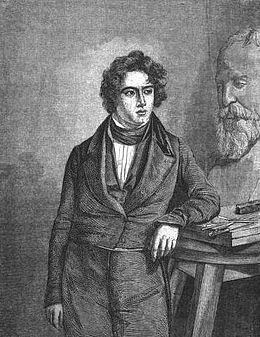 | ||
Died 13 September 1851, Marcilly, France | ||
Jean-François Legendre-Héral (21 January 1796, Montpellier - 13 September 1851, Marcilly) was a French Classical sculptor.
Contents
Biography
Jean-Francois Legendre-Heral was born on 21 January 1796 in Montpellier. His father was a postal worker. After his father's death, his mother married a musician, who introduced him to the arts. He was soon allowed to enroll in the École nationale des beaux-arts de Lyon, where he studied with Joseph Chinard and Joseph Charles Marin. In 1817, he obtained a grant from the city for a study trip to Rome. It was at this time that he added his step-father's name to his own to become Legendre-Héral. During his stay there, his fellow sculptor James Pradier accused him of casting his sculptures from life; an accusation that would later become the source of rumors in Lyon and Paris, apparently spread by François Joseph Bosio. In 1819, he was named to a professorship at the École, where Jean-Marie Bonnassieux and Hippolyte Flandrin were among his first students.
In 1825, he went to Paris with a deputation from Hérault to work on implementing an equestrian statue of Louis XIV for his hometown of Montpellier. He took this opportunity to request an extended leave from the École. Three years later, he returned to Lyon.
He executed several major commissions for the City of Lyon. In 1837, he was named a Chevalier in the Legion d'Honneur. The following year, he resigned from his teaching position and moved to Paris, where he was awarded major government contracts for the Jardin des Plantes, Versailles and several churches. In his last years, he suffered from a disease of the spinal cord, ceased working, and retired to Marcilly.
His son, Charles, who served as a model for some of his father's best-known statues, married an American and emigrated to the United States in 1854, where he became a Union General during the Civil War, an ambassador to China and an advisor to the governments of Japan and Korea.
Selected sculptures
An exhaustive list of his works may be found in the corresponding article on French Wikipedia
